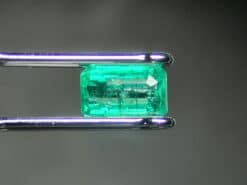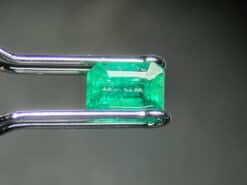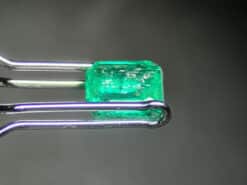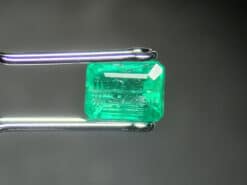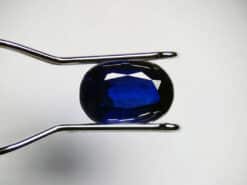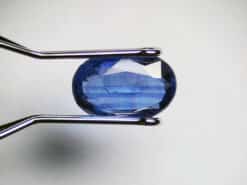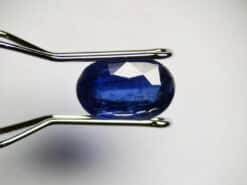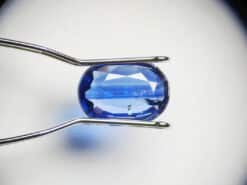How are gemstones mined?
Understanding Gemstones
Unearthing the brilliant beauty of gemstones is a process steeped in intricate procedures and fascinating geological journeys. Through this blog post, we aim to shine a light on the mysteries of gemstone mining and offer a glimpse into the astonishing world beneath our feet.
Gemstones, with their vibrant colors and sparkling allure, have captivated humans for thousands of years. But what exactly are these precious stones?

What are Gemstones?
Gemstones are mineral crystals or organic materials that have been cut and polished to reveal their innate beauty. These geological marvels come in a dazzling array of colors, types, and shapes, each with unique properties and cultural significance.
Importance of Gemstones in Different Industries
Gemstones are not just valuable for their aesthetic appeal. They hold essential roles in various industries such as jewelry, technology, healing practices, and more. They’re treasured for their intrinsic beauty in jewelry, valued for their unique properties in industrial applications, and revered for their supposed healing powers in alternative medicine.
Pre-Mining Stage
Before the mining process begins, there’s a significant amount of work and research that takes place. This pre-mining stage is crucial for determining where to mine and what mining methods to use.
The Gemstone’s Geological Formation
Gemstones are formed under specific geological conditions, often over millions of years. Understanding these conditions can provide invaluable clues about where to find them.
Intrusive Gemstone Formations
Intrusive gemstone formations occur when magma from deep within the Earth’s crust rises and cools slowly, forming crystals. Examples of such gems include rubies, sapphires, and emeralds.

Extrusive Gemstone Formations
Extrusive gemstone formations, on the other hand, occur when lava on the Earth’s surface cools rapidly, forming crystals. Obsidian, also known as volcanic glass, is a good example of an extrusive gemstone.
Prospecting and Exploration
Once we have an understanding of geological formations, the next step is prospecting. This process involves searching for potential mining sites where gemstones could be found.
Satellite Imagery in Gemstone Prospecting
Modern prospecting techniques often involve the use of satellite imagery. This technology provides a bird’s eye view of the landscape, helping to identify promising geological structures without the need for invasive techniques.
Ground Surveying Techniques for Gemstone Exploration
Once a prospective site has been identified, the next step is ground surveying. This involves the detailed examination of the site using techniques such as drilling and sampling to determine the site’s potential for gemstone extraction.
Different Mining Techniques Used in Gemstone Extraction
The methods used for mining gemstones vary based on the type of gemstone, the location, and the geological conditions of the site. Here are some of the common techniques:
Open-Pit Mining
Open-pit mining, also known as opencast mining, is a surface mining technique used to extract gemstones from the Earth’s surface.
The process begins by removing the overburden, the layer of soil and rock covering the gemstone deposit. Once the overburden is removed, miners excavate the pit, extracting gemstones as they dig deeper into the Earth.
Gemstones Commonly Mined Using Open-Pit Mining
This method is often used to extract gemstones like diamonds, which are typically found in kimberlite pipes, a type of volcanic rock formation.

Underground Mining
When gemstones are located too deep within the Earth to be extracted through open-pit mining, underground mining is used. This method involves digging tunnels or shafts into the Earth to reach the gemstone deposits.
Procedure of Underground Mining
The process of underground mining begins with the construction of an access shaft that reaches the deposit. Miners then use a variety of techniques to extract the gemstones, including drilling and blasting.
Gemstones Commonly Mined Using Underground Mining
Underground mining is commonly used for gemstones such as emeralds, sapphires, and rubies, which are often found deep within the Earth’s crust.

Alluvial Mining
Alluvial mining, also known as placer mining, is used to extract gemstones from alluvial deposits – deposits made by rivers or other running water. This method involves washing or sifting through sand, gravel, and mud to find the gemstones.
Procedure of Alluvial Mining
Alluvial mining typically involves the use of water to wash and sift through sediment, which is then carefully examined for gemstones. The gemstones are usually found as pebbles in the sediment and are easily extracted.
Gemstones Commonly Mined Using Alluvial Mining
Alluvial mining is often used to mine diamonds and other gems such as garnets and sapphires that can be found in riverbeds and other alluvial deposits.

Post-Mining Processes
After gemstones are extracted from the Earth, they must undergo several processes to transform them from rough stones into the sparkling jewels we commonly see.
Sorting and Grading of Gemstones
Once the gemstones are extracted, they are sorted and graded. This process involves examining each gemstone for its size, color, clarity, and overall quality.
How Gemstones are Sorted
Gemstones are sorted by examining them under magnification and categorizing them based on their physical attributes. Factors such as size, color, clarity, and shape are taken into account during this process.
How Gemstones are Graded
The grading of gemstones involves evaluating their quality based on a set of standard criteria. These criteria can vary based on the type of gemstone, but generally include factors such as color saturation, clarity, cut quality, and carat weight.
Cutting and Polishing of Gemstones
After the gemstones are sorted and graded, they are then cut and polished to enhance their natural beauty.
Cutting Techniques
The way a gemstone is cut can greatly influence its beauty and value. The most common cutting techniques include faceting, where the gemstone is cut into multiple flat surfaces, and cabochon, where the gemstone is shaped and polished into a smooth, rounded form.
Polishing Techniques
Polishing is the final step in the gemstone processing chain. This process involves using a variety of abrasive materials and techniques to give the gemstone a smooth, shiny finish.
Ethical and Sustainable Gemstone Mining Practices
As our appreciation for gemstones grows, so does our responsibility to ensure that the mining of these precious stones is done in a way that respects both people and the planet.
The Importance of Ethical Mining Practices
Ethical mining practices consider the social and environmental impacts of mining. They aim to minimize harm to the environment, protect the rights and safety of miners, and ensure that communities affected by mining activities are treated fairly.
Standards for Ethical and Sustainable Mining
Many organizations and initiatives set standards for ethical and sustainable mining. These standards guide mining operations to ensure they are responsible and sustainable.
Local and Global Mining Regulations
Mining operations are often subject to both local and international regulations. These regulations aim to manage the environmental impact of mining, ensure the safety and well-being of workers, and prevent illegal trading of gemstones.
Certifications for Ethically Sourced Gemstones
Certifications are a way for companies to demonstrate that their gemstones have been mined ethically. These certifications provide assurance to consumers that the gemstones they purchase are conflict-free and have been mined in a way that respects human rights and the environment.
The Impact of Technological Advancements on Gemstone Mining
Technology is changing the face of gemstone mining, offering opportunities for safer, more efficient, and more sustainable mining practices.
Use of Drones in Mining Operations
Drones have emerged as a powerful tool in gemstone mining. They can be used for a range of tasks, from mapping and surveying mine sites to monitoring the safety and efficiency of mining operations.
Role of AI and Machine Learning in Gemstone Identification and Extraction
Artificial Intelligence (AI) and Machine Learning are also making significant inroads into the mining industry. These technologies can help in the identification of potential mining sites, predict the quality of gemstones in a particular deposit, and even assist in the extraction process, thus improving the efficiency and sustainability of gemstone mining.
Conclusion: The Future of Gemstone Mining
Gemstone mining, while a challenging and complex process, unveils some of the Earth’s most exquisite natural treasures. As we venture further into the 21st century, the role of innovative technology and the emphasis on ethical and sustainable practices will continue to shape the future of this industry.
The integration of advanced technology in gemstone mining is not only enhancing operational efficiency but also driving a more sustainable and responsible approach. From AI to drones, the industry is leveraging these innovations to minimise environmental impact and ensure worker safety, making the journey from the depths of the Earth to a sparkling adornment more fascinating than ever.
As we continue to unearth and appreciate the timeless allure of gemstones, we must also remain committed to mining practices that respect our planet and its people. After all, the true value of these glittering gems lies not only in their captivating beauty but also in the conscientious care taken in their extraction.
Stay tuned to our blog for more insights into the world of gemstones and the intriguing processes that bring them into our lives.
Frequently Asked Questions
What are the different methods of gemstone mining?
Open-pit mining, underground mining, and alluvial mining are the three most common methods of gemstone mining. The choice of method depends on the type of gemstone and its location.
How are gemstones formed?
Gemstones are formed under specific geological conditions, often over millions of years. Some form in the Earth’s crust under intense heat and pressure, while others are formed by biological processes or meteor impacts.
How long does it take to mine gemstones?
The time it takes to mine gemstones can vary greatly depending on the size and depth of the deposit, the mining method used, and the type of gemstone being mined. It can take anywhere from a few weeks to several months or even years.
What happens after gemstones are mined?
Once mined, gemstones are sorted, graded, and then cut and polished to enhance their natural beauty. They are then ready to be sold or used in jewelry or other applications.
What are the environmental impacts of gemstone mining?
Gemstone mining, like all mining activities, can have significant environmental impacts. These can include habitat destruction, soil erosion, and water pollution. However, many mining companies are now adopting more sustainable practices to minimize these impacts.
What are ethical mining practices?
Ethical mining practices consider the social and environmental impacts of mining. They aim to minimize harm to the environment, protect the rights and safety of miners, and ensure that communities affected by mining activities are treated fairly.
How are gemstones graded?
Gemstones are graded based on a set of standard criteria, which can include factors such as color saturation, clarity, cut quality, and carat weight. The grading process evaluates the quality of the gemstone.
How is technology changing gemstone mining?
Technologies such as AI, machine learning, and drones are increasingly being used in gemstone mining. These technologies can improve the efficiency of mining operations, reduce environmental impacts, and improve safety.
What is alluvial mining?
Alluvial mining, also known as placer mining, is used to extract gemstones from alluvial deposits – deposits made by rivers or other running water. This method involves washing or sifting through sand, gravel, and mud to find the gemstones.
Are all gemstones mined?
While many gemstones are mined, some are created in a laboratory. These lab-created or synthetic gemstones have the same physical, chemical, and optical properties as their natural counterparts, but they are created in a controlled environment rather than being mined from the Earth.

